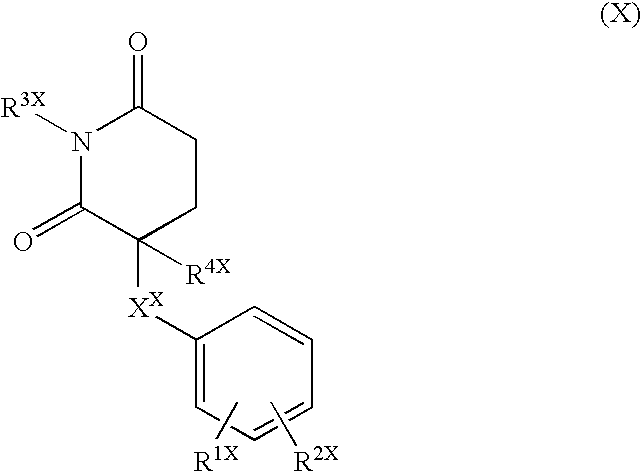Nitrogenous heterocyclic compounds and medical use thereof
a technology of heterocyclic compound, which is applied in the field of nitrogen-containing heterocyclic compound having can solve the problems that p38 map kinase inhibitors with cyp inhibitory activity or cyp-inducing action may not become safe medicines
- Summary
- Abstract
- Description
- Claims
- Application Information
AI Technical Summary
Benefits of technology
Problems solved by technology
Method used
Image
Examples
reference example 1
N-(4-bromo-2,6-dichlorophenyl)acrylamide
[0319] A solution of (4-bromo-2,6-dichlorophenyl)amine (4 g) and acryloyl chloride (1.4 mL) in dichloromethane (10 mL) was stirred overnight at room temperature. To the solution were added water and ethyl acetate at 0 degree. The organic layer was washed with a saturated aqueous solution of sodium bicarbonate and a saturated aqueous solution of sodium chloride, subsequently, dried over an anhydrous magnesium sulfate and then concentrated. The residue was washed with diisopropylether to give the title compound (1.96 g) having the following physical data.
[0320] TLC: Rf 0.25 (hexane:ethyl acetate=5:1);
[0321] NMR(CDCl3): δ 7.55 (s, 2H), 7.11 (br, 1H), 6.51-6.44 (m, 1H), 6.40-6.20 (m, 1H), 5.85 (d, J=10.5 Hz, 1H).
reference example 2
N-(4-bromo-2,6-dichlorophenyl)-3-[(2,4-difluorobenzyl)amino]propanamide
[0322] A solution of the compound prepared in Reference Example 1 (290 mg) and (2,4-difluorobenzyl)amine (420 mg) in toluene (1 mL) was stirred for 16 hours at 80 degrees. To the solution were added water and ethyl acetate. The organic layer was washed with a saturated aqueous solution of sodium chloride, dried over an anhydrous magnesium sulfate and then concentrated. The residue was purified by column chromatography on silica gel (ethyl acetate) to give the title compound having the following physical data.
[0323] TLC: Rf 0.20 (hexane:ethyl acetate=1:1);
[0324] NMR(CDCl3): δ 10.35 (br, 1H), 7.52 (s, 2H), 7.30-7.20 (m, 1H), 6.90-6.70 (m, 2H), 3.90 (s, 2H), 3.05 (t, J=8.7 Hz, 2H), 2.57 (t, J=8.7 Hz, 2H).
example 1
3-(4-bromo-2,6-dichlorophenyl)-1-(2,4-difluorobenzyl)tetrahydropyrimidin-4(1H)-one
[0325]
[0326] To a solution of the compound prepared in Reference Example 2 in tetrahydrofuran (3 mL) was added 37% aqueous solution of formaldehyde (2 mL). The mixture was stirred for 30 minutes at room temperature. To the mixture were added water and ethyl acetate. The organic layer was washed with a saturated aqueous solution of sodium chloride, dried over an anhydrous magnesium sulfate and concentrated to give the compound of the present invention (230 mg) having the following physical data.
[0327] TLC: Rf 0.54 (hexane:ethyl acetate=1:1);
[0328] NMR(CDCl3): δ 7.56 (s, 2H), 7.43 (m, 1H), 6.85 (m, 2H), 4.34 (s, 2H), 4.05 (s, 2H), 3.22 (t, J=6.77 Hz, 2H), 2.71 (t, J=6.41 Hz, 2H).
EXAMPLE 1(1)-1(18)
[0329] Using corresponding amine instead of (4-bromo-2,6-dichlorophenyl)amine, using corresponding amine instead of (2,4-difluorobenzyl)amine, subjecting to a conversion reaction to hydrochloride, if necess...
PUM
| Property | Measurement | Unit |
|---|---|---|
| Cell angle | aaaaa | aaaaa |
Abstract
Description
Claims
Application Information
 Login to View More
Login to View More - R&D
- Intellectual Property
- Life Sciences
- Materials
- Tech Scout
- Unparalleled Data Quality
- Higher Quality Content
- 60% Fewer Hallucinations
Browse by: Latest US Patents, China's latest patents, Technical Efficacy Thesaurus, Application Domain, Technology Topic, Popular Technical Reports.
© 2025 PatSnap. All rights reserved.Legal|Privacy policy|Modern Slavery Act Transparency Statement|Sitemap|About US| Contact US: help@patsnap.com



